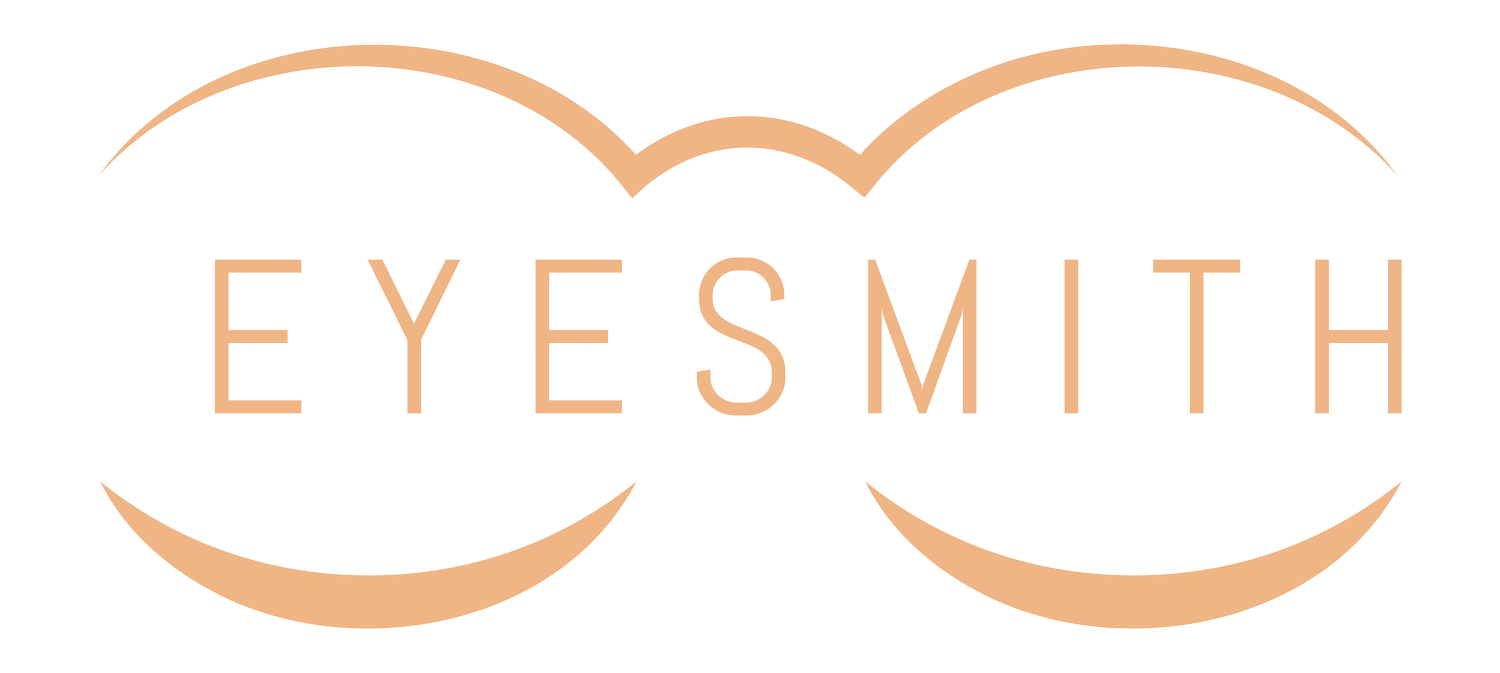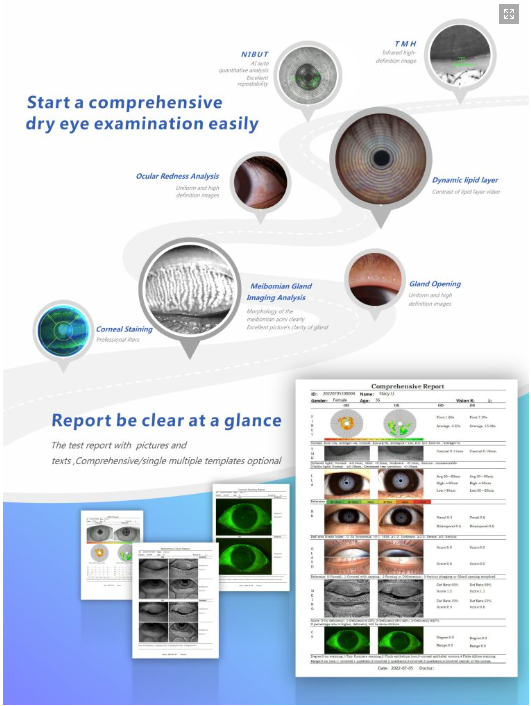Investigation and treatment of dry eyes.
What is Dry eye?
Do you suffer from any of the following symptoms?
Foreign body sensation - "scratchy" eyes?
Redness of the whites of the eyes?
Eyes feeling 'gritty', often worse in the mornings?
Blurry vision, which usually improves when you blink?
Excessive watering?
If the answer to any of above is yes, then you may be suffering from dry eye. At The Eyesmith, we are able to offer a comprehensive dry eye assessment and treatment plan, if required.
Dry eye syndrome is a condition characterized by a lack of sufficient lubrication and moisture on the surface of the eye. This can lead to discomfort, irritation, and inflammation of the eyes. In many cases, the primary issue with dry eye syndrome is a disruption in the normal production and drainage of tears, which play a crucial role in maintaining the health and clarity of the eyes.
Here are the key issues associated with dry eye syndrome:
1. Inadequate Tear Production:
The eyes constantly produce tears to maintain moisture on the surface. In dry eye syndrome, there may be insufficient tear production, leading to a lack of necessary lubrication. This can result from factors such as aging, hormonal changes, or certain medical conditions (quite commonly Rosacea).
2. Poor Tear Quality:
Even if the eyes produce an adequate amount of tears, the quality of the tears may be compromised. Tears consist of water, oils, mucus, and other components. An imbalance in these components can affect the stability and effectiveness of the tear film, leading to dryness and discomfort.
3. Rapid Tear Evaporation:
Tears normally form a thin film that coats the eyes and helps prevent rapid evaporation. In dry eye syndrome, this film may break down too quickly, leaving the eyes exposed and susceptible to dryness. Environmental factors, such as low humidity, wind, and prolonged screen time, can contribute to increased tear evaporation.
4. Inflammation of the Ocular Surface:
Dry eyes can cause irritation and inflammation of the conjunctiva (the clear tissue covering the white part of the eye) and the cornea (the front clear surface of the eye). This inflammation can lead to redness, a gritty sensation, and sensitivity to light.
5. Symptoms and Discomfort:
Individuals with dry eye syndrome may experience symptoms such as stinging or burning sensations, a feeling of grittiness or foreign body sensation, excessive tearing (as the eyes may produce reflex tears in response to dryness), and blurred vision.
6. Compromised Eye Health:
Chronic dry eye can have long-term effects on eye health. Prolonged dryness and inflammation may increase the risk of corneal abrasions, infections, and other complications if left untreated.
Management of dry eye syndrome typically involves addressing the underlying causes, managing symptoms, and improving tear production or quality.
Example dry eye report
Dry eye assessment.
The cost of a full dry eye assessment at the eyesmith is £85.
This assessment includes a detailed history and series of tests to enable us to produce an AI-assisted report. The following will be assessed:
Meibomography - infra-red meibomian glands imaging analysis, to look for gland survival
Meibomian gland opening analysis - HD eyelid imaging, looking at capping
Ocular redness analysis - HD eye surface image, automatically recognises blood vessels v. ocular redness, as a sign of inflammation
Corneal staining analysis - fluorescein corneal stain image relates to corneal damage
Tear scope - lipid tear layer analysis
Tear meniscus height - assessing volume of tear layer
Non-invasive Tear Break Up Time (NITBUT) - assessment of how long tears protect the corneal surface
Exploratory gland expression - considers gland viability and potential to improve
Ultimately, this assessment should enable us to establish a diagnosis and treatment plan - and give you some relief.
Why see us?
We have decades of experience, and certification on dry eyes from Moorfields. We have also heavily invested in equipment and technology to enable us to offer you the best solutions for dry eyes.
Managing dry eye: Treatment options.
If you suffer from dry eyes, there are a number of treatment options.
In recent years, numerous advances have been made in relation to dry eye diagnostic markers, technologies and other treatment options. Each person’s dry eye are different and may require a very different mode of treatment: purely palliative, to replace or conserve patient tears, or to improve symptoms and ocular comfort but not necessarily to treat the underlying disease process.
If our dry eye assessment reveals that you are suffering from this condition, we will work with you to find the treatment options that work best. These may include:
Blinking: Paying attention to regularly blinking as this pumps and spreads tears.
Ocular lubricants: Many formulations are available, the trick is to diagnose where the deficiency is to know which drops may help.
Lipid supplements in drop and spray format are now available. Liposomal sprays have been shown to improve TBUT and lipid layer thickness for up to 90 minutes compared with a saline spray. There are also studies showing that lipid-containing drops can be superior to normal tear supplements and they may help prevent evaporation in low-humidity environments.
Ointments can improve the lipid layer. Those containing a mixture of mineral oil, petroleum and lanolin do allow a longer retention time on the eye but, due to the thickness, these preparations can blur the vision.
One significant problem for many tear substitutes is the inclusion of preservatives, to minimise microbial growth. In vitro studies suggest that prolonged presence of preservatives such as benzalkonium chloride is problematic in dry eye but clinical studies are more mixed. This may be because the dilution of preservative in the tear lm helps reduce their effects. In moderate dry eye preservative-free drops may become more important due to reduced dilution. If patients are using multiple drops on a daily basis (>4–6×) then a preservative-free medicine is preferable.
Drop compliance is often poor, so for it to help, you need to get into the habit of using them.
Let us tell you which drops will be correct for your specific dry eye condition - it all depends on what is causing the problem!
Hot compresses and lid massage: In milder cases of dry eye where there is an issue in getting the oils out of the glands housed in the eyelids, lid massage can help to encourage the meibum out of the glands allowing improvement in functioning.
Hot compresses and lid massage can be ineffective if the glands are completely blocked. If so, we will often perform meibomian expression as an in-house treatment to completely unblock the glands prior to asking you to perform the treatment at home. We will also show you how to use hot compresses and carry out lid massage correctly.
Lifestyle factors: Drinking alcohol and smoking have a detrimental effect on the tears. Poor hydration levels are also associated with dry eye - however, the optimum hydration level for decreasing dry eye symptoms is unclear.
Additional management for very dry eyes.
Those suffering from severe dry eye may need additional help.
Punctal plugs: Adding small plugs to the drainage opening in the lower lid helps preserve natural tears, thereby reducing the concentration of salts in the eye. These are small, painless to fit and create no awareness in the eye. We fit plugs that dissolve in 6 months; this means it is a good way to experience the benefits without it being a permanent change. The treatment normally makes a big difference to those very dry eyes. The cost is £120 every 6 months.
Intense Pulsed Light (IPL) treatment: This treatment aims to address and fix the underlying cause of meibomian gland related dry eyes, by stimulating the glands to start working more effectively. Treatment includes meibomian gland expression (detailed below) and 3/4 sessions are required. More details are available here.
Meibomian gland expression: By using special forceps we can gently coax meibomian oil out of the glands, clearing out stagnant, gloopy oils to make room for new, less viscous oils. Meibomian gland expression needs repeating periodically to maintain gland function in cases of miebomian gland disease.



